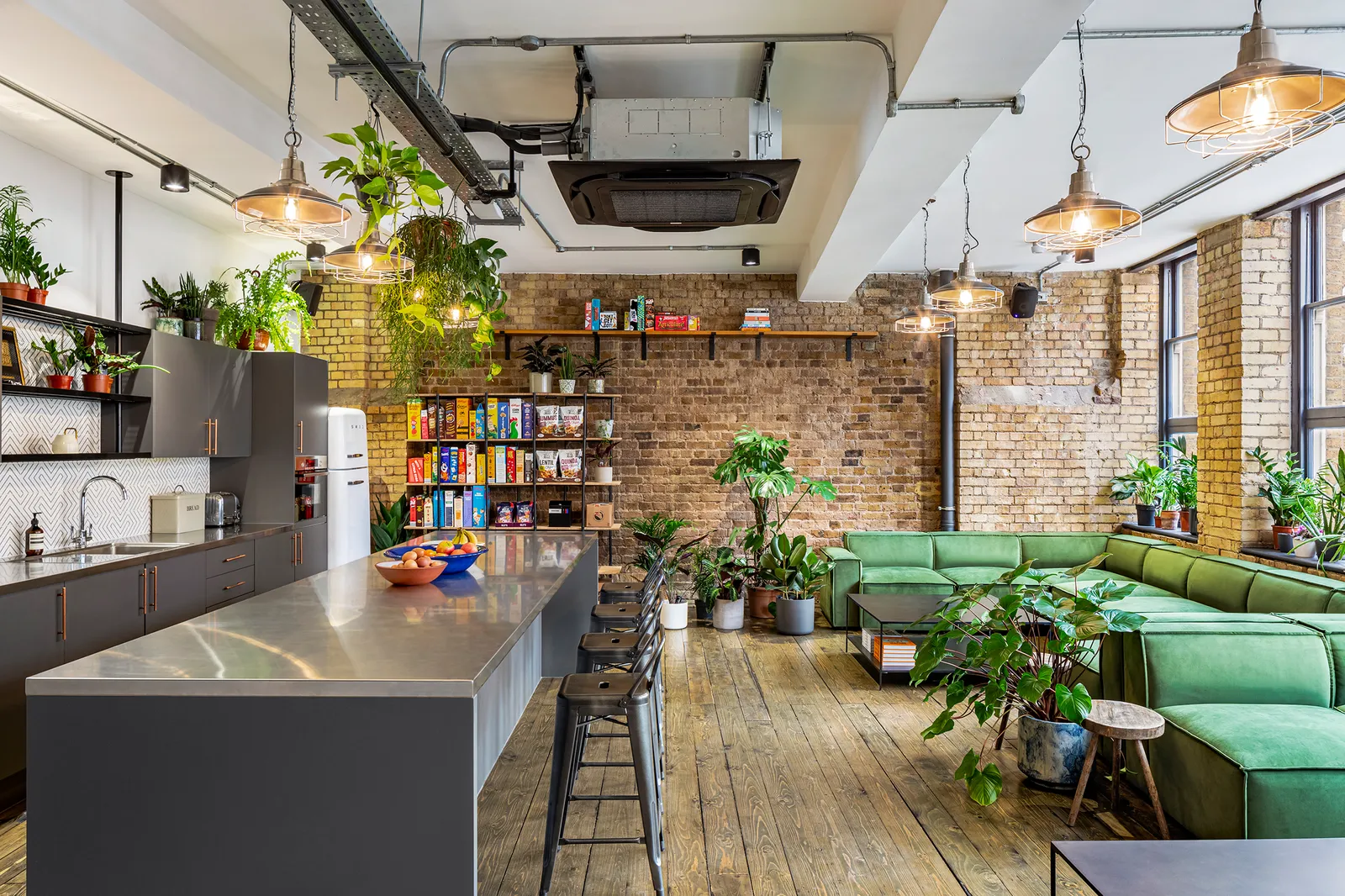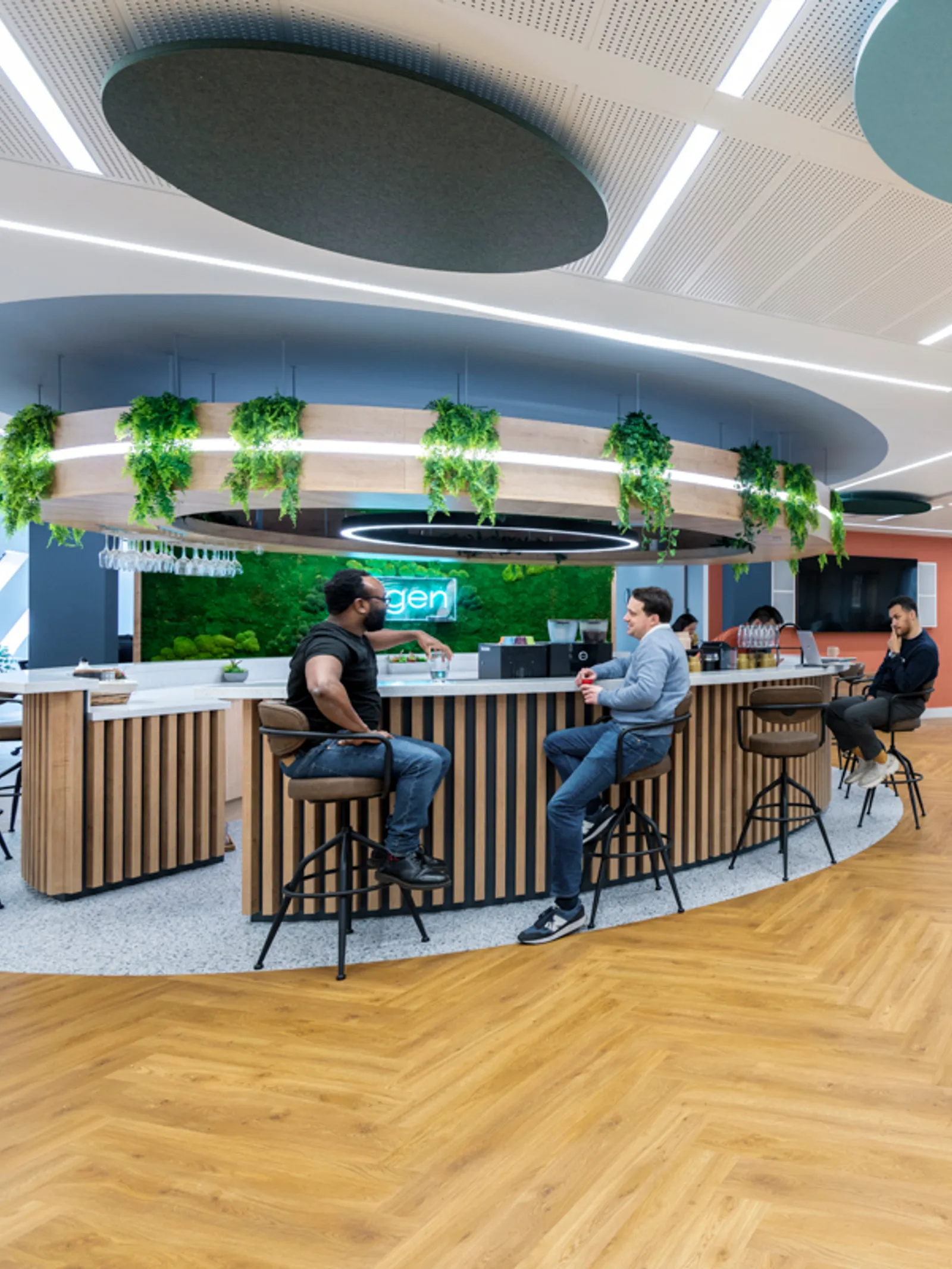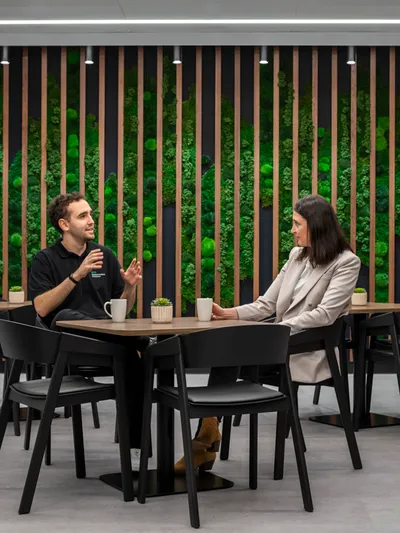The concept of sustainability has become increasingly relevant in today's world, as we strive to balance our economic activities with environmental protection and social responsibility. In the workplace, sustainability encompasses various aspects, from energy efficiency to waste reduction to ethical sourcing practices. Office design plays a crucial role in promoting sustainability, as it can significantly impact a company's environmental footprint and create a healthier and more productive work environment.
A report from the European Environment Agency in November 2020 highlighted shifts in energy use, pollution and air quality post pandemic. It also shed light on the less obvious consequences of the pandemic, such as an uneven environmental impact on COVID-19 outcomes, depending on peoples age, class, income, location, gender and race.
We have been out on the other side of the pandemic for some time now. However, there are signs that some of the shifts will endure - and the demands for change coming from individuals and organisations as well as governments, can no longer be delayed or ignored.
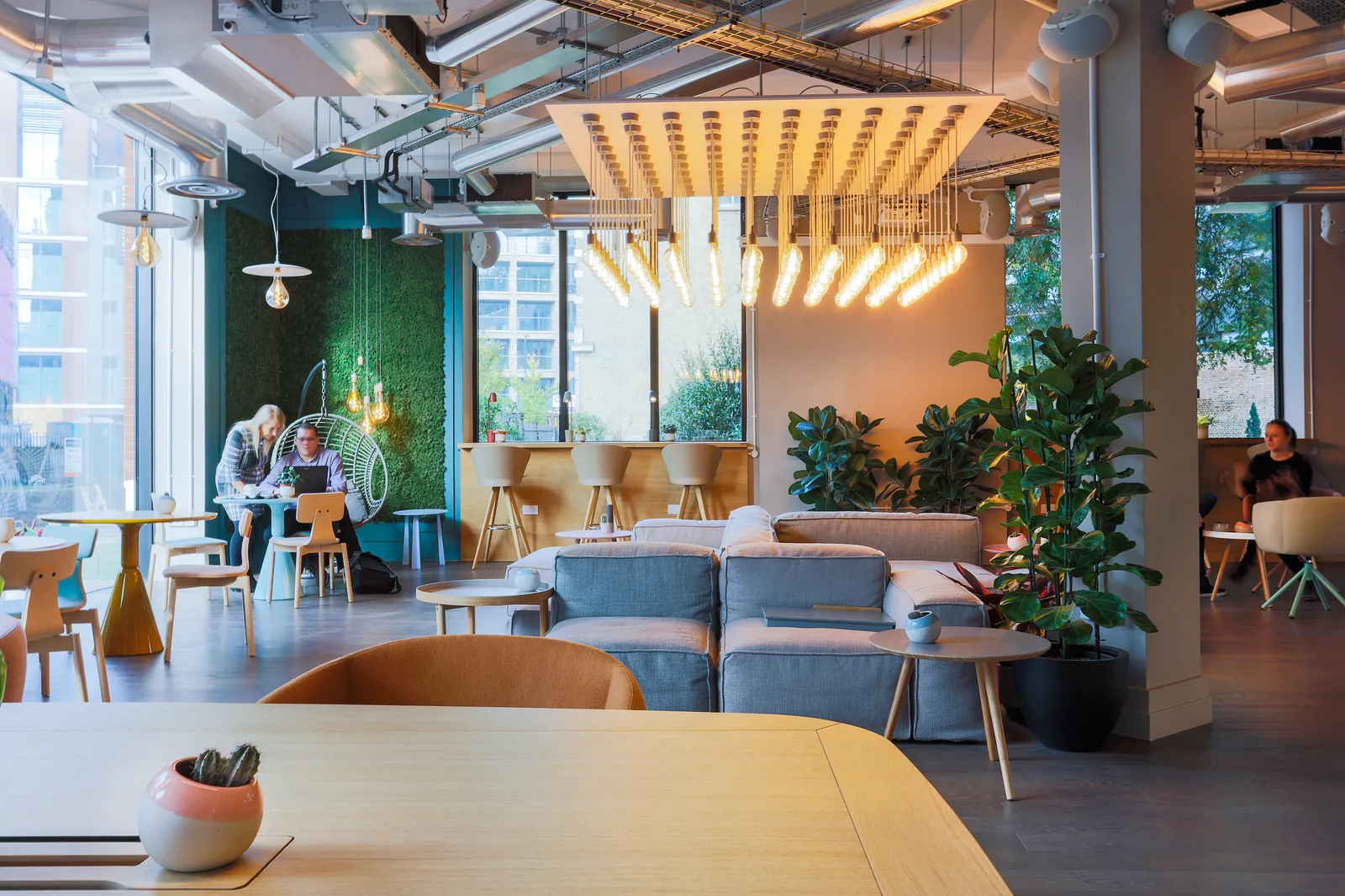
Sustainability in the workplace - a smart investment
Integrating sustainable principles into office design is not just a matter of doing the right thing; it also makes good business sense. Some of the ways that sustainability in the workplace can benefit your business include:
A boost in recruitment and retention
A large-scale study of 14,000 people in nine countries from IBM’s Institute for Business Value in April reported that 90 percent of respondents said the pandemic had changed their views on sustainability. Crucially, most were willing to change their personal behaviour significantly to address environmental issues.
This includes who they are willing to work for.
- Nearly three quarters say that organisations with strong environmental policies were more attractive employers.
- Over 80 percent said they wanted to make better choices about commuting and other travel, even if it cost them more.
- These findings echo those of the Pew Research Center, which found last year that 70 percent of 14,276 people in 14 nations said that climate change is a major threat to their country. For most of these people, the threat was greater than that of infectious disease.
These changes in attitude will be welcomed by legislators who are setting bold new environmental targets. The Climate Change Act of 2008 saw the UK government set five-year emission reduction targets. In the most recent carbon budget, the government set a new legally binding target to cut the country’s greenhouse gas emissions 78 percent by 2035 compared to 1990 levels.
Beneficial effects on employee wellbeing
Investors are demanding better approaches to the environment too - they are acknowledging the ways in which environmental performance goes hand in hand with wellbeing. A report from the United Nations’ Environment Programme Finance Initiative found that:
92 percent of real estate managers expect demand for healthy, green buildings to grow in the next three years.
The report highlights the growing awareness of health and wellbeing as an element of environmental, social and governance (ESG) strategies. The team behind the Fitwel accreditation supported the report - demonstrating the clear link between wellbeing and green building design. This is now a common feature of all similar certifications and a core message of research groups Building Research Establishment and Green Building Council.
However, it’s also a reflection of the complexity of these issues and their interrelatedness - the questions we ask about the environment are growing in sophistication. Consumers are more aware of whole life cycles and the importance of the supply chain - it is no longer enough for a manufacturer to claim that a product is recyclable -
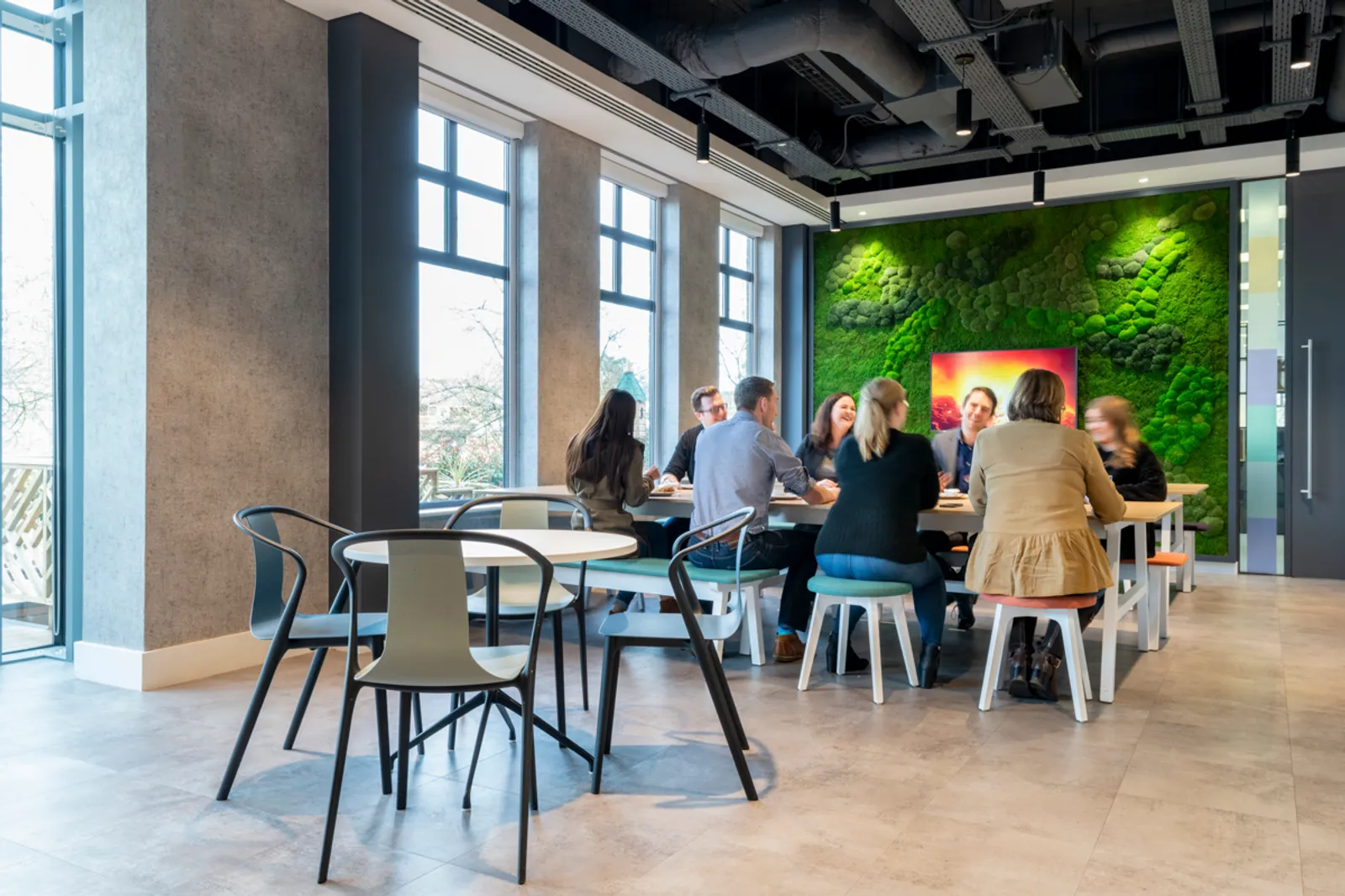
The environmental impact of digital
The digital world is not exempt from this level of scrutiny. Its environmental impact may not be so obvious but it exists. Data and digital communications can have a very serious impact on the environment.
The most extreme example of this is Bitcoin, described by Bill Gates as using “more electricity per transaction than any other method known to mankind.”
People are beginning to ask more questions, especially when it comes to the sources of the electricity used in the creation and storage of data. According to a study by the International Energy Agency (IEA), data centres account for approximately 0.3% of global electricity consumption, and streaming services are estimated to account for around 6% of global data centre emissions.
Businesses can do their bit by incorporating technology into their office designs that works to lower their carbon footprint, as well as create best practices around data use and storage that are shared and adhered to company-wide.
Sustainability: A continuous journey
Sustainability in the workplace is not a one-time project; it's an ongoing commitment that requires continuous evaluation and improvement and intelligent workplace design plays an important part in this. Regularly monitoring energy consumption, waste generation, and water usage will identify areas for optimisation. Encouraging employee engagement by promoting sustainable practices and providing incentives for eco-friendly behaviour will also help to integrate sustainable practices into your organisation.
By embracing a long-term view on sustainability and integrating sustainable principles into office design, businesses can create a healthier, more productive, and more environmentally responsible workplace. This not only benefits the environment but also contributes to a more engaged and motivated workforce, driving business success and fostering a positive brand image.
If you’d like to discuss how Area can help you optimise your workplace for the age of sustainability, get in touch.
